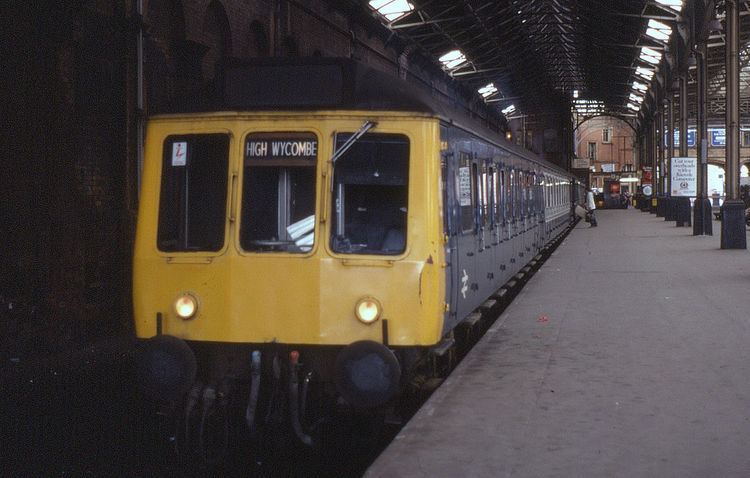In service 1960–1998 Number built 41 four-car sets | Manufacturer BR Derby Formation DMBS–TCL–TS–DMBS | |
 | ||
Capacity DMBS: 78 Second;TCL 30 First, 40 Second;TS: 106 Second;4-car total: 30 First, 302 Second | ||
The British Rail Class 115 diesel multiple units were 41 high density sets which operated the outer-suburban services from Marylebone usually to destinations such as High Wycombe, Aylesbury and Banbury which are on the Chiltern Main Line and Great Central Main Line (now the London to Aylesbury Line). Sometimes, these sets used to operate 8-12 car long expresses to Nottingham Victoria in the final years of the GCML. Coincidentally, Class 115 units operated services under Table 115 in the British Rail timetable.
Contents
Based on the basic Derby high density design, the sets are similar to Class 127 but were internally superior as the class had larger windows, better furnishings, lighting and wall surfaces.
Some sets were also built for the CLC line between Liverpool and Manchester. These were later transferred to Marylebone. They also worked from Tyseley in the later years.
The Marylebone sets, which were later transferred to Bletchley but remained on Chiltern Line duties (and finally to Old Oak Common), were declared surplus after the introduction of Class 165s, from 1991 onwards. While at Bletchley and Old Oak Common depots the class found use on the Gospel Oak to Barking Line, units being formed as power twins. They were, in turn, replaced on this line by Class 117 power twins, displaced from Paddington suburban duties.
The final class 115 working out of Marylebone was on 29 July 1992. The Tyseley vehicles survived a bit longer, until February 1994.
Some of the class briefly found their way on to the Redhill to Tonbridge Line to replace ageing DEMU sets. The line was electrified in 1993, in order to allow a diversionary route for the Eurostar, and the class 115s were replaced initially with Class 411 EMUs, then ex-Merseyrail Class 508 EMUs in 1998 (after privatisation).
Technical details
Preservation
15 vehicles are preserved. DMBS 51677 was scrapped in early 2017.
